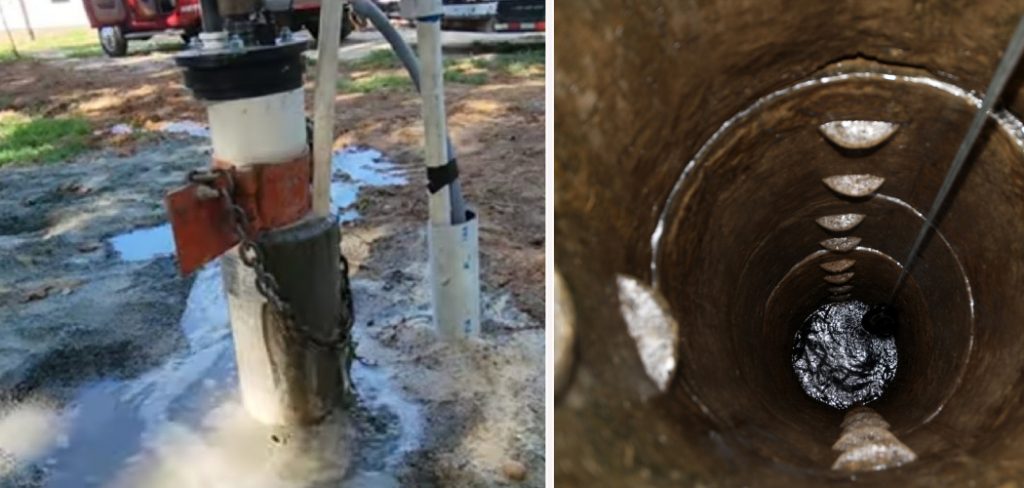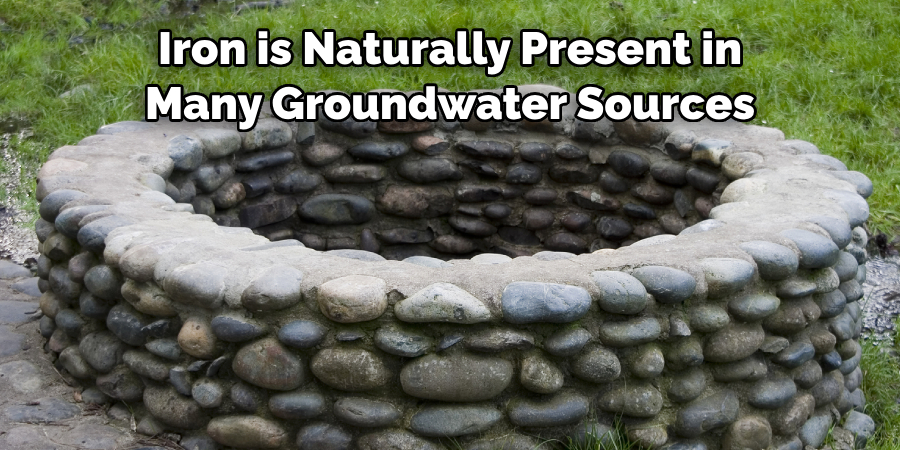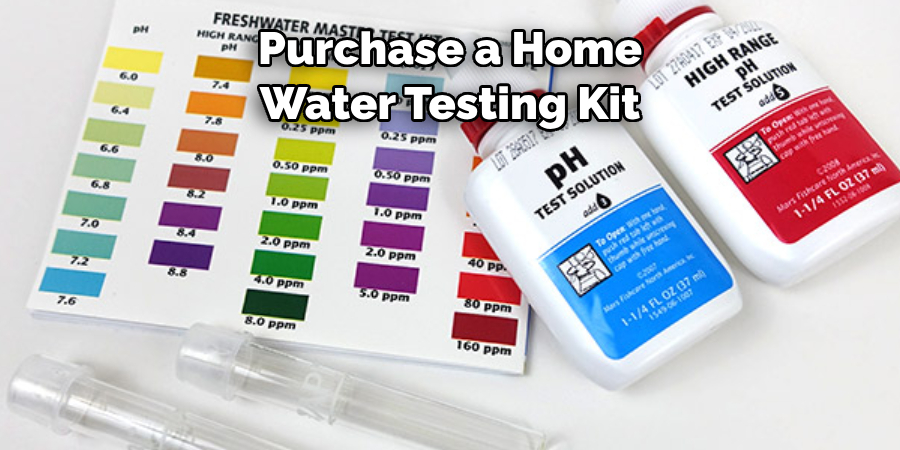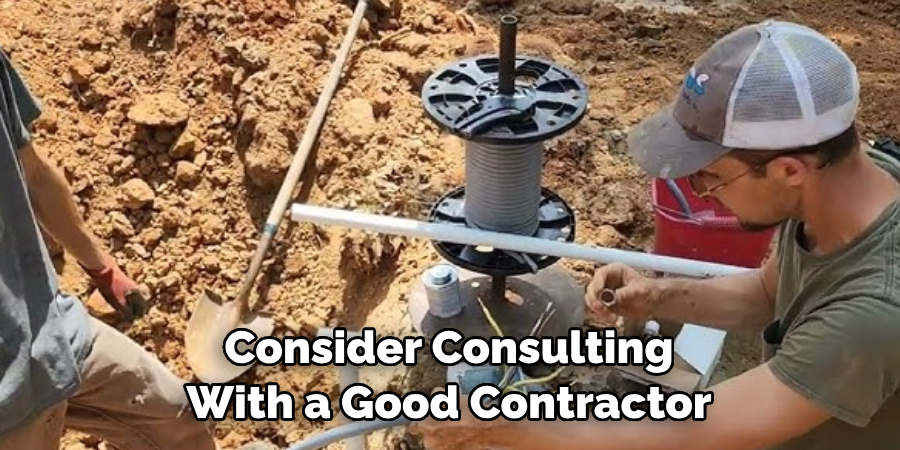Are you tired of dealing with unpleasant-tasting, cloudy water coming out of your well? If so, don’t give up hope yet! With a few simple steps and the right tools for the job, you can have crystal-clear drinking water in no time. Staying informed about how to fix muddy well water is key to making sure that your family stays safe and healthy.

Don’t worry–fixing an issue with muddy well water doesn’t have to be a daunting task; by following our tips in this blog post, you’ll have crystal clear and clean-tasting water flowing from your taps sooner than you think! Read on for foolproof advice on how to fix an issue with murky ground-drawn liquid–and why it’s important.
What Causes Muddy Well Water?
1 . Sediment Buildup
One of the main causes of muddy well water is sediment buildup in the water. This can occur due to a variety of factors, including heavy rainfall, construction or farming activities near the well, or a damaged well casing. When sediment builds up in the well, it gets stirred up and carried into your home’s water supply every time you turn on a faucet.
2 . High Iron Content
Iron is naturally present in many groundwater sources, and it can cause your well water to take on a rusty or muddy appearance. In small amounts, iron does not pose a health risk; however, it can be an aesthetic concern as it can stain laundry and fixtures.

3 . Low pH Levels
A low pH level, or acidic water, can also contribute to muddy well water. This can occur when the groundwater interacts with certain types of rock formations, such as limestone or shale. Acidic water can cause corrosion in plumbing and fixtures, leading to discoloration and a muddy appearance.
4 . Bacterial Contamination
Bacteria such as iron bacteria, sulfur-reducing bacteria, and manganese bacteria are common culprits for causing muddy well water. These microorganisms are naturally present in soil and groundwater and can thrive in wells that have stagnant or slow-moving water. They can also create slime layers that trap sediment and give the water a murky appearance.
10 Tips on How to Fix Muddy Well Water
1 . Test Your Water
The first step in fixing muddy well water is to test it. You can purchase a home water testing kit or hire a professional to come and test your water for you. This will help determine the cause of the muddiness and what steps need to be taken to fix it.

2 . Install a Sediment Filter
If sediment buildup is the main issue, installing a sediment filter can help prevent it from entering your home’s water supply. These filters trap particles as small as 5 microns, ensuring that your water remains clear and clean.
3 . Use an Iron Filter
In cases where high iron content is causing muddy well water, an iron filter can be installed to remove excess iron from the water. These filters use a specialized media to oxidize and trap iron particles, leaving your water clear and free of rust.
4 . Add a Neutralizing Filter
If low pH levels are the culprit, adding a neutralizing filter can help raise the pH level of your water. This will prevent corrosion and improve the overall quality of your well water.
5 . Shock Chlorination
For bacterial contamination, shock chlorination is often recommended. This involves introducing chlorine into the well to kill off any bacteria present. It is important to follow proper safety precautions when performing shock chlorination and to have your well tested afterward to ensure that all bacteria have been eliminated.

6 . Regular Maintenance
Preventing muddy well water also involves regular maintenance of the well. This includes inspecting the well casing and ensuring it is free of cracks or damage, properly sealing the top of the casing to prevent surface contamination, and maintaining a safe distance from any potential sources of contamination.
7 . Keep an Eye on the Weather
Heavy rainfall can stir up sediment and cause muddy well water. If you know a storm is coming, consider turning off your well pump to prevent excess sediment from entering your home’s water supply.
8 . Be Mindful of Nearby Construction
Construction activities near your well can also cause muddy well water. Make sure to communicate with any contractors working in the area and take precautionary measures such as covering your well cap during construction.
9 . Address Plumbing Issues
If you notice cloudy or muddy water coming from only one faucet, it could be a sign of plumbing issues. Make sure to address any leaks or clogs in your pipes to prevent them from contributing to muddy well water.
10 . Consider Professional Help
In some cases, fixing muddy well water may require the help of a professional. If you have tried several methods and are still experiencing issues, consider consulting with a good contractor who can assess the situation and provide recommendations for improving the quality of your well water.

Frequently Asked Questions
What Precautions Can I Take to Avoid Muddy Well Water?
To avoid muddy well water, there are several precautions you can take: It is recommended to test your well at least once a year for bacteria and every 3-5 years for chemical contaminants. Ensure that there are no potential sources of contamination near your well, such as septic systems, animal waste, or fertilizers. Proper maintenance of your well and regular inspection can also help prevent muddy well water. Additionally, it is important to properly dispose of hazardous materials and chemicals to avoid contamination of groundwater.
What Are the Common Causes of Muddy Well Water?
Muddy well water is usually caused by sediment or debris that enters the well system. This can be due to a variety of reasons such as heavy rainfall, soil erosion, nearby construction activity, or faulty well equipment. In some cases, it may also be caused by bacterial growth or chemical contamination.
How Can I Determine if My Well Water is Contaminated?
If you notice changes in the color or smell of your well water, it could be an indication of contamination. You can also conduct a simple home test using a well-water testing kit to check for bacteria, pH levels, and other common contaminants. If you suspect contamination, it is best to contact a professional well water contractor for further testing and treatment.
What Are the Steps to Fix Muddy Well Water?
The first step in fixing muddy well water is to identify the source of the problem. This may require inspecting your well equipment and pipes for any signs of damage or malfunction. Once the source of contamination is determined, it can be treated accordingly. This may involve installing a filtration system, shock chlorination, or repairing/replacing faulty equipment.
Is It Safe to Drink Muddy Well Water?
In most cases, muddy well water is not safe to drink as it may contain harmful bacteria or chemicals. It is best to avoid consuming well water until the source of contamination has been identified and treated. In case of an emergency, boiling the water or using bottled water can be temporary solutions.
How Can I Prevent Muddy Well Water in the Future?
To prevent muddy well water in the future, it is important to regularly maintain and inspect your well system. This includes keeping the area around your well clean and free of potential sources of contamination. Properly disposing of hazardous materials and chemicals also helps prevent groundwater contamination. Additionally, investing in a filtration system or installing a gravel pack around the well can help prevent sediment from entering the system.
Can I Fix Muddy Well Water on My Own?
While some minor issues with muddy well water can be fixed on your own, it is always recommended to seek professional help. A licensed well contractor will have the necessary expertise and equipment to properly identify and treat the source of contamination. Attempting to fix the issue yourself may result in further damage or inadequate treatment, leading to potential health risks and costly repairs in the future.
How Much Does it Cost to Fix Muddy Well Water?
The cost of fixing muddy well water can vary depending on the source and severity of contamination, as well as the methods used for treatment. It is best to consult with a professional well contractor for an accurate assessment and cost estimate. However, investing in regular maintenance and prevention measures can ultimately save you money in the long run by avoiding costly repairs or health risks associated with contaminated well water.
Conclusion
Dealing with muddy well water can be frustrating and concerning. However, by understanding the potential causes and implementing proper maintenance and treatment methods, you can enjoy clean and clear water in your home.
Now you know how to fix muddy well water Remember to regularly test your water and address any issues promptly to ensure the safety and quality of your drinking water. So, be proactive and take the necessary steps to keep your well water clean and clear for years to come. Keep in mind that prevention is key, but if you do encounter muddy well water, there are various solutions available to help remedy the problem.
